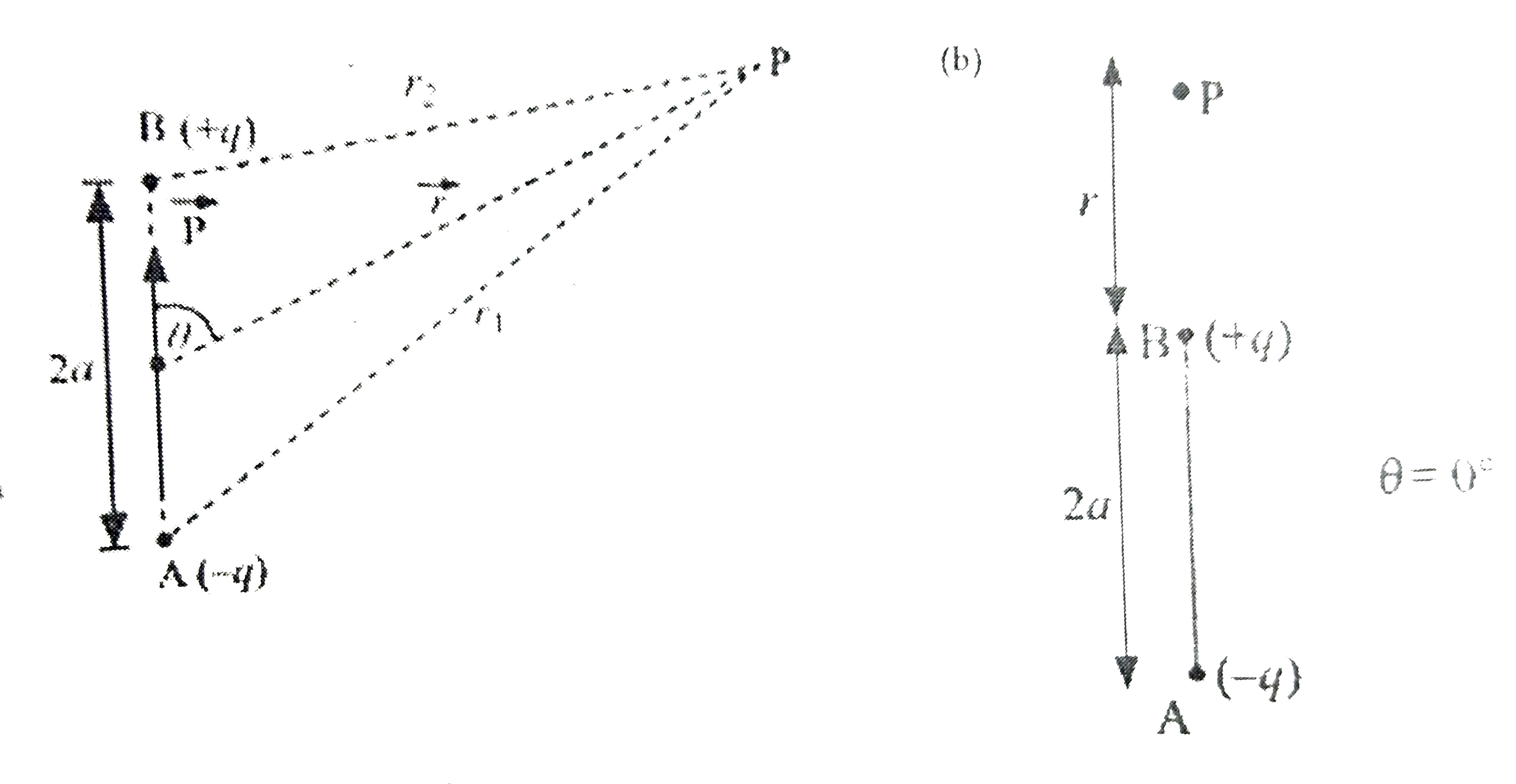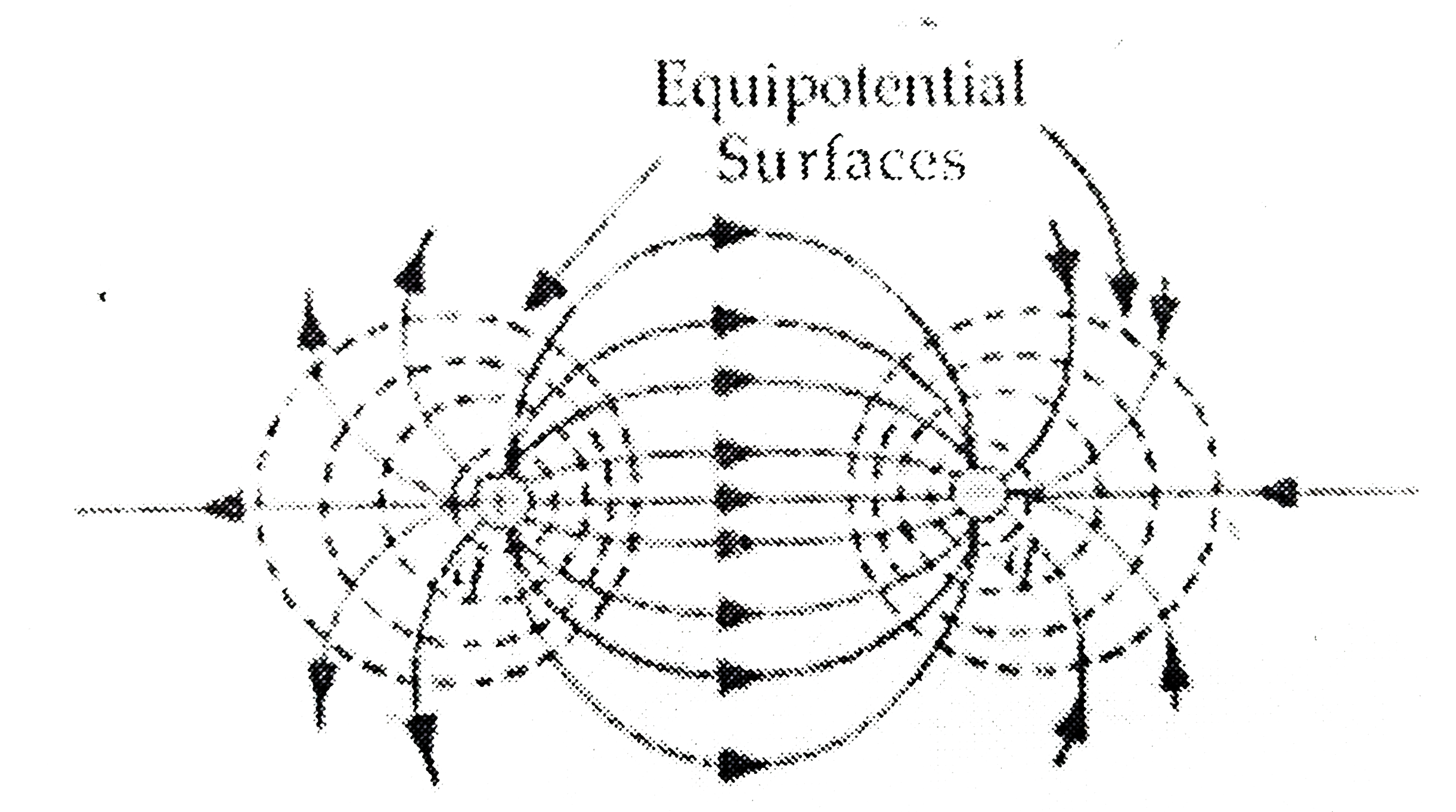(i) Derive the expression for the specific for the electric potential due to an electric dipole at a point on its axial line.
(ii) Depiet the equivpotential surfaces due to an electric dipole.
(i) Expression : Potential at P due to charge +q and -q.
V−q=−q4π∈0r1 and V+q=q4π∈0r2
Potential at P due to dipole V=V−q+V+q=q4π∈0[1r2−1r1]……..(i)

From the figure, r21=r2+d+2arcosθ
and, r22=r2+a2+2arcos(180∘−θ)=r2+a2−2arcosθ
⇒r21=r2[1+a2r2+2arcosθ]=r2[1+2arcosθ] as r>>a,a2r2=0
⇒r1=r[1+2arcosθ]12
So 1r1=1r[1+2arcosθ]−12
and 1r2==1r[1−2arcosθ]−1/2
Using it for (i)
V=q4π∈0r[1+arcosθ−(1−arcosθ)]
[Applying Binomial Theorem and neglecting highest power of 2ar ]
Hence, V=q4π∈0r[1+qrcosθ−1+arcosθ]
=q×2acosθ4π∈0r2
⇒V=pcosθ4π∈0r2,{p=q×2a= dipole moment}
Vaxial =pcosθ4π∈0r2 ( ∵θ=0∘ on axial line) =p4π∈0r2
(ii) Vnet=VA+VB=−kq(r2+a2)+−kq(r2+a2)=0

Topper's Solved these Questions
- XII BOARDSBook:XII BOARDS PREVIOUS YEARChapter:XII BOARDSExercise:SET-III DELHI BOARD SEC-C
Explore 5 Videos
- XII BOARDSBook:XII BOARDS PREVIOUS YEARChapter:XII BOARDSExercise:[SET -II, OUTSIDE DELHI]
Explore 9 Videos
- XII BOARDSBook:XII BOARDS PREVIOUS YEARChapter:XII BOARDSExercise:SET-II DELHI BOARD (SEC-B)
Explore 2 Videos
- SAMPLE PAPER 2019Book:XII BOARDS PREVIOUS YEARChapter:SAMPLE PAPER 2019Exercise:SECTION D
Explore 6 Videos
Similar Questions
Potential Due To And Electric Dipole
View SolutionDerive the expression for the electric potential at any point along the axial line of an electric dipole.
View SolutionDerive the expression for the electric potential at any point along the axial line of an electric dipole.
View SolutionDerive the expression for the electric potential at any point along the axial line of an electric dipole.
View Solution(a) Define electric dipole moment. Is it a scalar or a vector ? Derive the expression for the electric field of a dipole at a point on the equatorial plane of the dipole.
(b) Draw the equipotential surfaces due to an electric dipole. Locate the points where the potential due to the dipole is zero.
View SolutionDerive an expression for the electric field at any point along the axial line of an electrical dipole.
View SolutionDerive an expression for the electric potential at any point along the axial line of an electric dipole.
View SolutionDeduce an expression for the electric potential due to an electric dipole at any point on its axis. Mention one contrasting feature of electric potential at a point due to dipole as compared to that due to a single charge.
View SolutionElectric Field Due To An Electric Dipole At A Point On The Axial Line
View SolutionDeduce an expression for the electric potential due to an electric dipole at any point on its axis. Mention one contrasting feature of electric potential of a dipole at a point as compared to that due to a single charge.
View Solution

